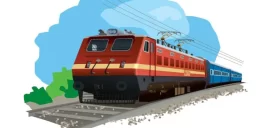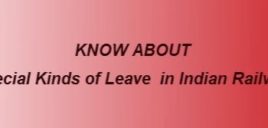A Standard I interlocked station has mechanical interlocking. It also usually has just one running line and a loop line (and perhaps a couple of sidings). These are usually branch line stations. The points are worked by point levers situated near the points, and the signals are worked from interlocking frames in the signal cabin. Key locking (see above) is used, but the mechanism is such that a key obtained from the points mechanism after setting the points for one route must be used on the signal post locking mechanism to pull off the corresponding signal(s) and also to operate the block instrument, thus interlocking the signals and points. All signals must be operated from the same interlocked frame on the platform, under the station master’s control. Through running speed for trains is restricted to 50km/h. (? Some sources say 45km/h.) An Outer signal must be provided, as must a bracketed Home signal to give drivers indication of whether the train is being received on the main line or a loop line so they can regulate its speed appropriately. Starter signals are optional. The main line does not have to be completely isolated from the adjacent loop lines.
A Standard II interlocked station may be mechanically or electrically interlocked (usually the latter). These are usually non-trunk main line stations. The main running line at such a station can be completely isolated from the loops and shunting sidings on both sides. In mechanical interlocking, plunger locks or other similar mechanisms must be used to keep the points locked in position when set for a route. Plunger locks may be operated from the cabin, or line-side. In electrically interlocked systems, setting the points activates electrical circuitry that enables or disables the appropriate signal levers and block instruments. A Warner or Distant signal must be provided, along with an Outer and a bracketed Home. Starters are optional, although if there is no starter the Warner must be locked with the block instrument. The signals may be operated from the platform under the station master’s control or from a cabin. Through running speed for trains is restricted to 75km/h.
Standard I and II stations sometimes do not have starter signals, only home signals for receiving trains; in such a case trains are dispatched using flag or lamp signals from the station. Standard I and II stations usually have only one signal cabin.
A Standard III interlocked station has points and signals that are either interconnected mechanically within the same mechanism, or electrically as with route-relay and panel interlocking. These are usually stations on trunk routes. Usually two signal cabins whose signal and points controls are interconnected are provided. These stations usually have the full complement of signals including warners or distants, outer and bracketed home signals, and also starter signals, for receiving and dispatching trains. (Advanced starters are still optional.) All points must be operated centrally, or in coordination between the two (or more) interconnected cabins. Through running speed for such stations is limited only by the speed limit for the section. The loop lines at such stations have to be completely isolated from the main running line by means such as sand humps, over-run lines, trap points, or derailing switches, etc. In some cases, especially with signals and points too far from the station building for direct mechanical operation, the operation of remote points and signals is dependent on keys provided by the Station Master; without the key the point or signal lever cannot be operated. Interlocking is ensured by having the key dispensed from a key instrument that is connected to the block instrument under the Station Master’s control. Common key dispensing mechanisms were the Hepper’s Key Instrument, the Electric Slide instrument, and the Interlocked Key Box. In other cases, the block instruments may be located in the cabins, but the signals controlled directly by the Station Master.
Standard III.I (or III/I) is another designation found for some stations, which indicates that the station is rated as for Standard III, but the loop lines are not physically isolated on one side of the station. Similarly, a Standard II.I (or II/I) station is rated as in Standard II, but has loop lines or sidings that are not completely isolated on one side of the station.
Source – IFRCA.org
This entry was posted in 2 Railway Employee, STUDY NEW, Railway Employee











